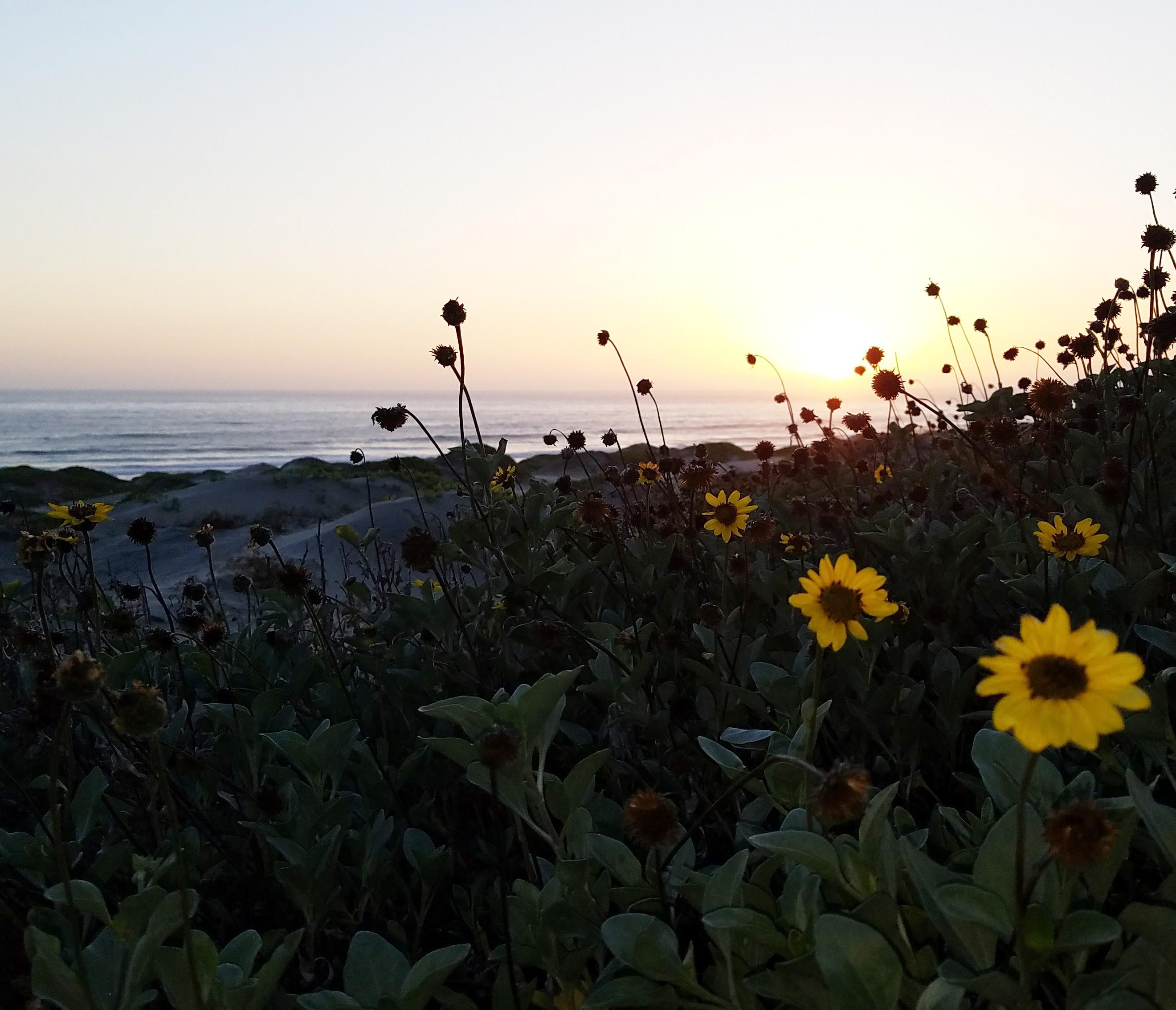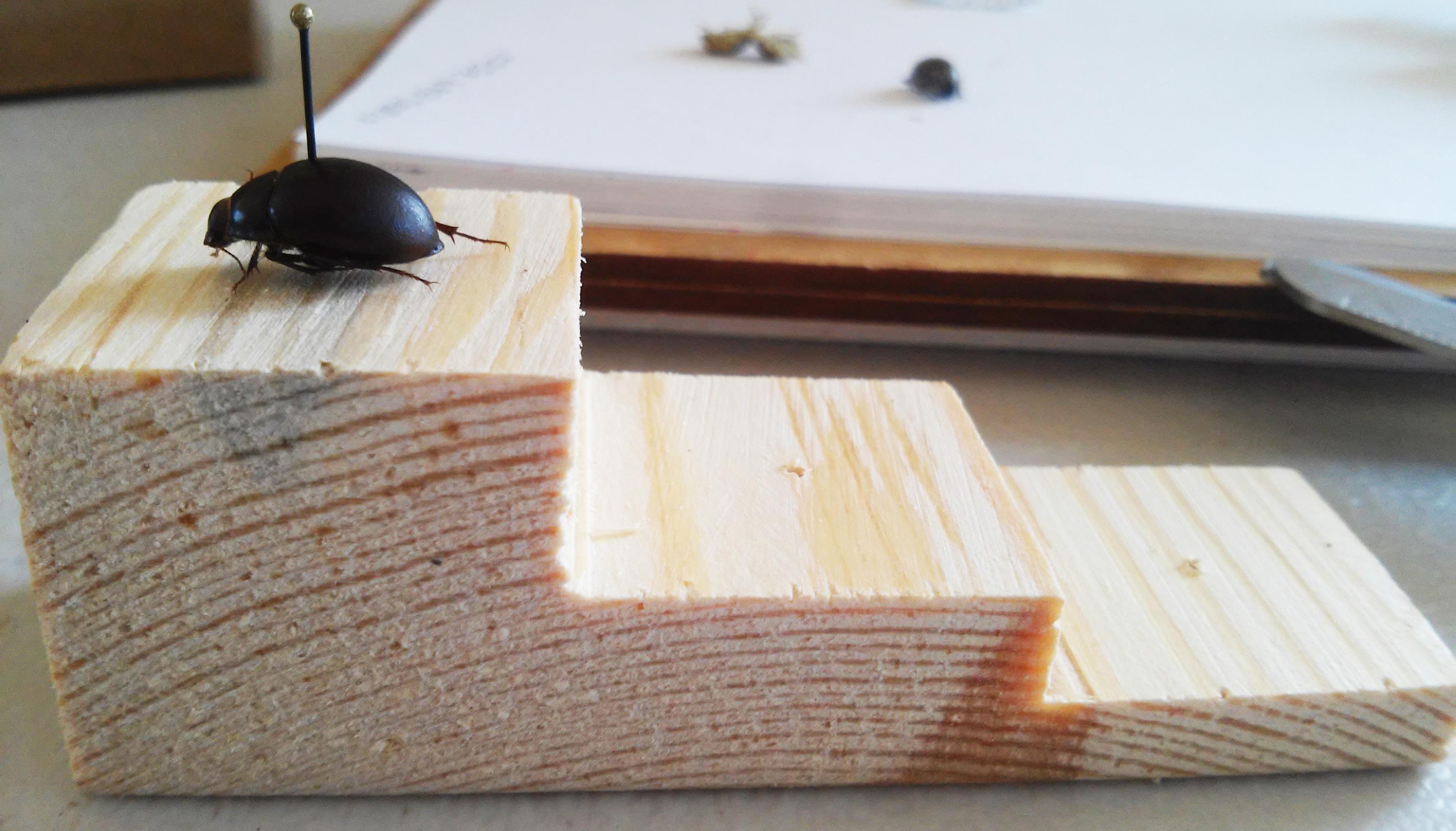
4 minute read
Entomology Over Time: Study of insects in the dunes of the Punta Mazo Nature Reserve
By Natalia A. Rodríguez and Michael A. Wall
It’s incredible to know the great diversity of organisms that can live in a coastal ecosystem. To learn a little more about this, we will talk about the coastal dunes of the Punta Mazo Nature Reserve (located in northwest Mexico, next to the Pacific Ocean). This ecosystem is a unique place with incomparable beauty. It’s highly dynamic in space and time, which continually changes the diversity of organisms within their environment.
Advertisement
As part of the project “Entomological Study of the Coastal Dunes of the Baja California Peninsula as a Baseline for the Management of Ecosystems”, the spatiotemporal study began in July 2019 in collaboration with Terra Peninsular. Its objective was to know how the entomological diversity in the dunes of the Punta Mazo Nature Reserve varies and/or changes.

Pinacate beetle (Eusattus ciliatus).
Photo by Michael A. Wall.
To carry out this 12-month study, we chose three sites in the dunes, each one with different characteristics based on vegetation cover.
The first plot or quadrant was located at the beginning of the sandy bar and had coastal scrub vegetation, where species such as Isocoma menziesii (goldenbush) and Bromus rubens predominate. The second plot was located right in the middle of the sandbar, and the Abronia maritima (red sand verbena) and Helianthus niveus (showy sunflower) predominate. The third quadrant was located at the sandy bar’s tip and was dominated by Abronia maritima and Encelia california.

Processing of samples in the facilities of the Punta Mazo Nature Reserve.
Photo by Natalia A. Rodríguez.
The difference in vegetation cover between the three quadrants would reflect the peculiarities of entomological diversity in each monthly sampling. Four types of traps were used to maximize the catch: pitfalls or dry pits, bee bowls, blue vane, and Malaise.
In July 2019, the San Diego Natural History Museum teamed up with Terra Peninsular to place the four types of traps in each of the quadrants. This first sampling was carried out for seven days since some of the traps are left in the field for five nights. After that time, the samples were collected and labeled with the quadrant number, date, and type of trap to record each one of them for further processing.

Dunes of the sandy bar of Punta Mazo.
Photo by Natalia A. Rodríguez.
The goal of this first outing was to place the quadrants and provide training to Terra Peninsular staff members so that in the following months they could sample every month, since the team from the San Diego Natural History Museum would return to the nature reserve every three months to collect specimens, sample and leave materials (flasks, labels, field logs, etc.) for the next three months, and thus have better logistics throughout the study.
The goals for this first expedition were to place the quadrants and provide training to Terra Peninsular staff members. Since the team from the San Diego Natural History Museum would return to the nature reserve every three months, Terra Peninsular staff would be in charge of taking monthly samples to have better logistics throughout the study. Upon their return, the team from the museum would collect specimens, samples, and leave materials (flasks, labels, field logs, etc.) for the following three months.

Sunset in the coastal dunes of Punta Mazo.
Photo by Michael A. Wall.
While we’re still identifying the insects we have sampled, there are some promising signs that dunes support a healthy invertebrate community. It’s worth noting that we have found a variety of beetles that are restricted to sandy environments, such as Amblyderus parviceps, an antlike flower beetle found only in the dunes of California and Baja California, and Eusattus ciliatus, a beetle from the dunes around San Quintín Bay.
Another species of beetle (Eleodes moestus) is also present in large numbers, and it specializes in sandy habitats along the coast of the Pacific of the entire peninsula. All these specimens at Punta Mazo indicate that the nature reserve supports a healthy community of insects.

Assembly of a beetle specimen (Eusattus ciliatus).
Photo by Natalia A. Rodríguez.
Unfortunately, this study was discontinued in March 2020 due to the COVID-19 pandemic. We hope to resume the work in March 2021 to conclude the sampling. Although out of date, it will serve to complete the 12 months of analysis and will serve to have monthly entomological information for future studies.
About the project
The project “Entomological study of the coastal dunes of the Peninsula of Baja California as a baseline for ecosystem management ” is managed by Natalia A. Rodríguez under the supervision of Michael A. Wall, and it receives support from CONACYT and JiJi Foundation.

Big sand tiger beetle (Cicindela formosa).
Photo by Michael A. Wall.
Related articles
• Punta Mazo and El Socorro: unique coastal dunes in San Quintin (issue number 15, page 26).
• Coastal Dunes as Priority Ecosystems for Conservation sandy habitats along the coast of the Pacific of the entire peninsula.
♦ NATALIA A. RODRÍGUEZ REVELO, Phd | Postdoctoral fellow at the San Diego Natural History Museum nrevelo@sdnhm.org
♦ MICHAEL A.WALL, Phd| Vice President of Science and Conservation, Curator of Entomology at the San Diego Natural History Museum mwall@sdnhm.org









